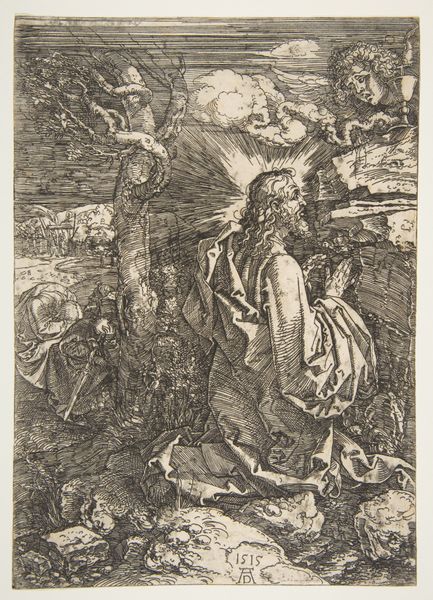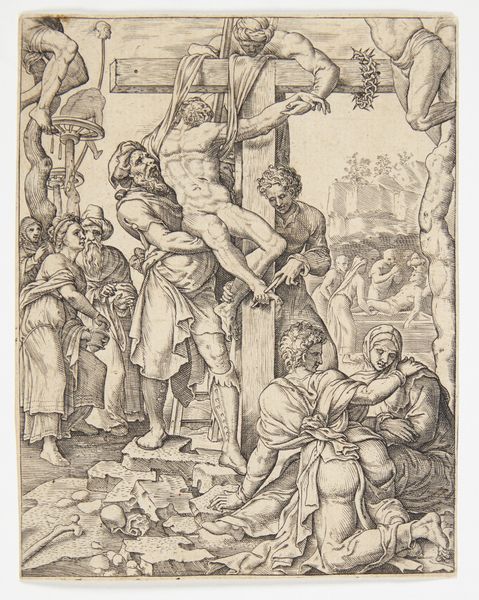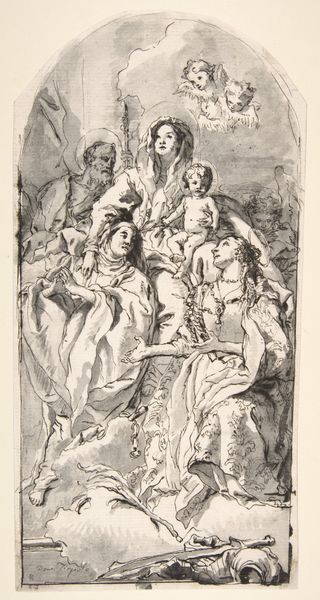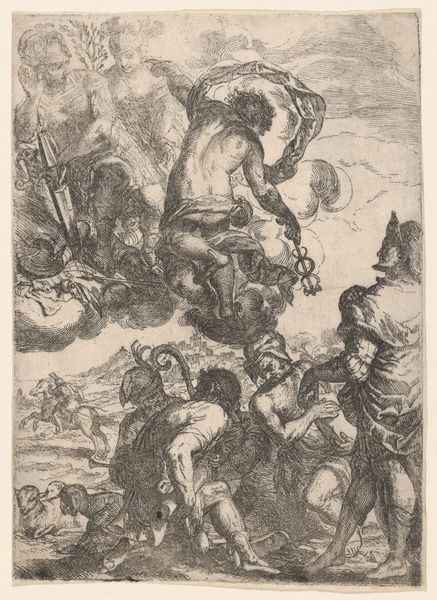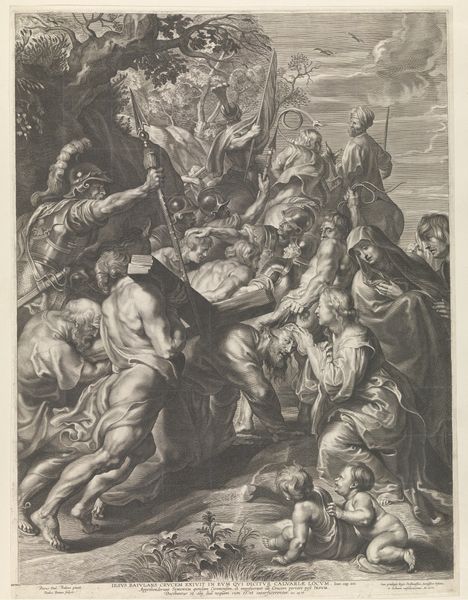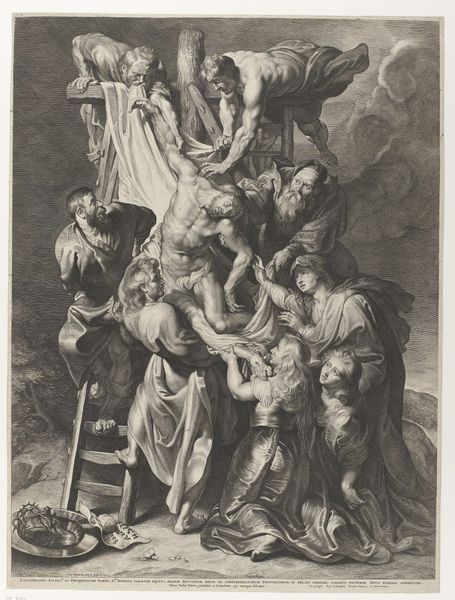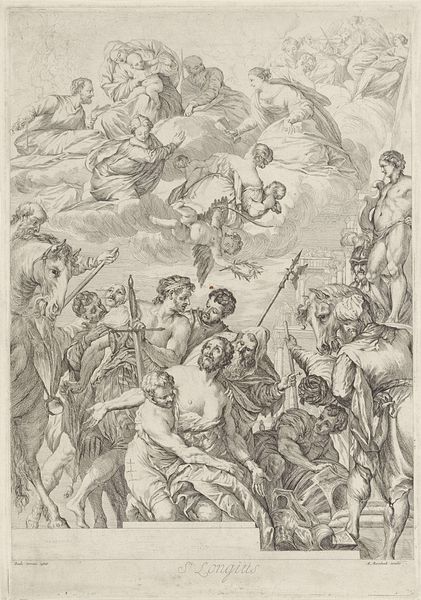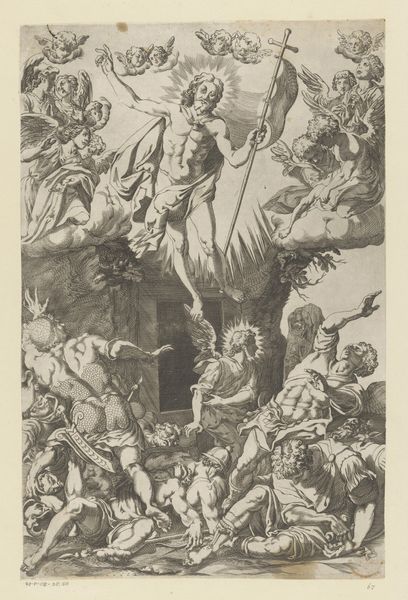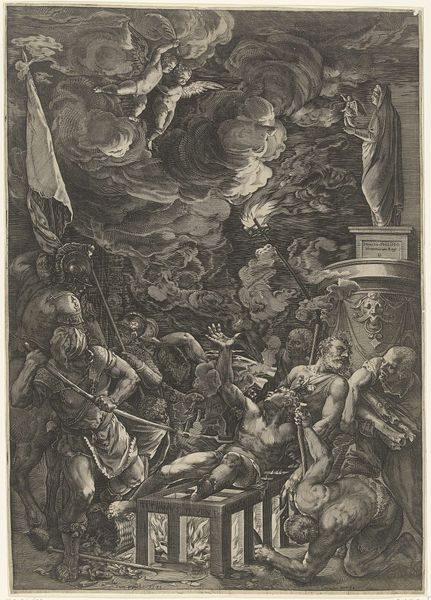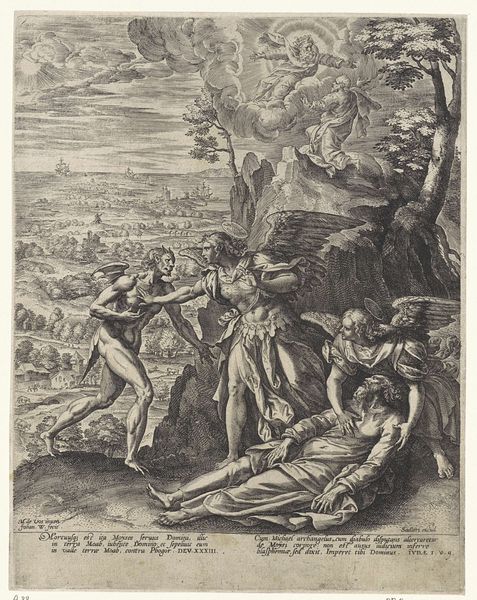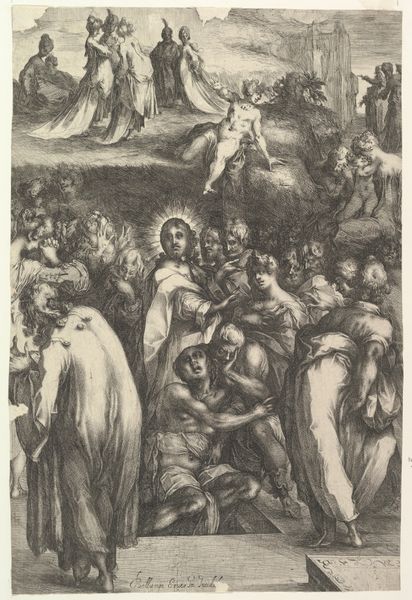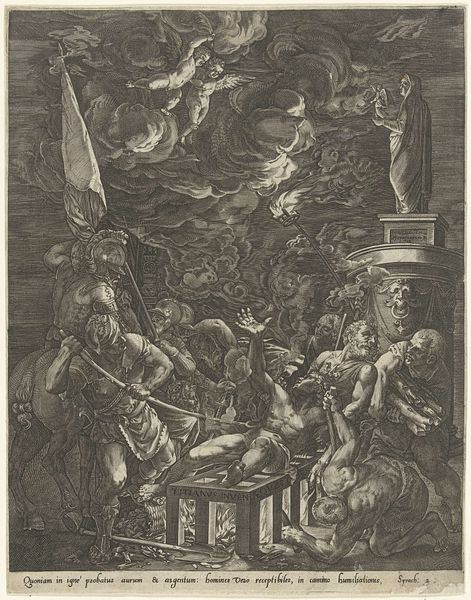
drawing, print, engraving
#
drawing
#
allegory
#
baroque
# print
#
pencil drawing
#
history-painting
#
nude
#
engraving
Dimensions: image: 9 7/16 x 6 3/16 in. (23.9 x 15.7 cm), trimmed to image
Copyright: Public Domain
Curator: Welcome. Today we’re examining a piece called "Manhood" attributed to Claude Gillot, created sometime between 1673 and 1722. It's currently held at the Metropolitan Museum of Art. What are your initial thoughts? Editor: Visually, it's quite arresting. The composition is dynamic, almost chaotic, with figures scrambling all over each other around a central reclining nude. The stark contrast and dense lines create a somewhat anxious mood. Curator: Indeed. It’s an engraving, a medium deeply connected to print culture and dissemination of ideas. Look at how Gillot uses line to suggest volume and texture. It reflects a societal interest in distributing allegorical representations and, therefore, constructing very public ideals. Editor: The engraving technique itself is fascinating. Note the density and varying weights of lines. He used it as a way of constructing something both detailed and evocative in the service of depicting an allegory. I notice, at the bottom, the writing of poetry, and believe that these textual features offer vital cultural contexts to analyze. Curator: Absolutely. The poem refers to the 'bitter times of pain and worry,' and the ability to use one's strength and avoid temptation. It emphasizes the social necessity for ‘manhood’ through work and delayed gratification— a stark contrast to mere hedonism or aristocratic privilege. Editor: The visual metaphor of figures struggling around this central female nude is also worth examining. They seem trapped or entangled in this process, and each worker has their respective labor as they work to maneuver an impossibly long log above the central figures. Curator: It's intriguing how Gillot presents this allegory. It appears that laboring is constructed as the path to virtue in this case. This virtue seems to reside ultimately in some measure of power over oneself and others. I read this visual strategy as symptomatic of an economy becoming capitalized with access concentrated into fewer and fewer hands. Editor: I can see that connection. Overall, it’s the tension between the dynamism of its components and allegorical structure that continues to hold my gaze. The Baroque dynamism is balanced by something very didactic. Curator: And that balance, or the negotiation within that imbalance, perhaps tells us a lot about the changing social and economic landscapes of Gillot’s time. Editor: A fruitful interpretation. This intense print rewards close, sustained looking. It truly brings the socio-economic environment into focus!
Comments
No comments
Be the first to comment and join the conversation on the ultimate creative platform.
